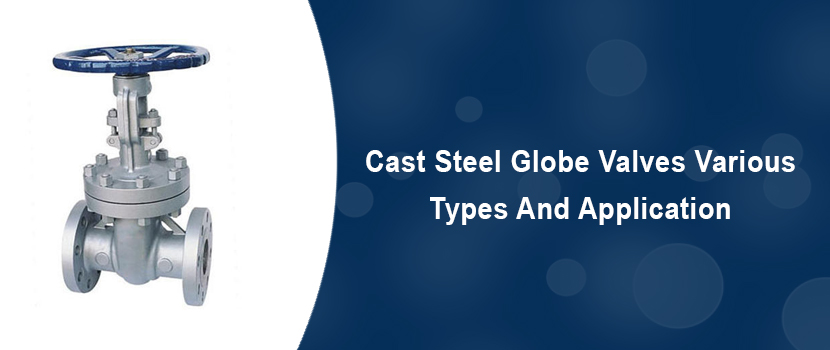sales@fvfindia.com View Mobile Number
Cast Steel Globe Valves – Its Various Types And Application
Posted by Admin on November, 14, 2022

The cast steel globe valve is one of the most common forms of the valve. There are many benefits by using this valve. Then we associate the various shapes of globe valves with other kinds of valves, such as gate valves and ball valves.
Consider the three key properties of a globe valve to see if it's matched for your application.
They are, first and foremost, lateral drive valves, which open and close in response to the up-and-down effort of a stem. Second, they control fluid flow by letting, stopping, or regulating it. Some valves just have two states: open and closed, though, globe valves can control flow without entirely stopping it. Third, likened to other valves, they make large head losses, which is a tradeoff for the throttling services.
Cast steel globe valves working principle
Cast steel globe valves are made up of three parts: a hand wheel, a bonnet, and a body. The stem is housed in the bonnet, and it screws up and down in the bonnet when the hand wheel is turned. A disk or plug is a small section at the end of the stem that can be metallic or non-metallic and come in a variety of shapes, reliant on the use.
A seat is contained in the globe-shaped body to which the valve is entitled. The seat is a metal frame with a hole that separates the body into two chambers and lets fluid pass through. Fluid flows up through the opening in the seat when the valve is open.
When a globe valve plug or disk is kept in the seat, fluid flow is clogged. When the valve is open, the fluid must revolutionize directions twice to pass through the seat, resulting in substantial head loss.
Globe valves can throttle or control flow, which is one of their vital advantages. They might be partially open in addition to being closed or open. This lets you modify the flow without having to stop it.
Globe Valve Shapes & Types
T-pattern/z-pattern, y-pattern, and angle-pattern globe valves are offered. Each type works, in the same way, to stop or throttle fluid flow, but the flow path—and hence the head loss—differs.
T-shaped or z-shaped globe valves are the most common. The outline of these valves is designed as a "t-pattern" because the intake and exit are in a conventional line. However, "Z-shaped" is an improved description because it relays to the water's passage through the valve rather than the device's exterior design.
Alterations of z-pattern globe valves are y-pattern globe valves. The consumption and outlet are still in a straight line, but the bonnet and stem are angled (rather than perpendicular) to the body, ensuing in a y-shaped profile.
Considerations of Using Globe Valves
When you need to adjust flow but don't want to be concerned about pressure loss, globe valves are the way to go. The following are some samples of applications:
• Fuel oil systems
• Cooling water systems
• Turbine lubricating oil systems
• Feed water and chemical feed systems
• Fire sprayers or other water-based fire protection systems, drain and trim applications.
Search
Category
Recent Posts

Leave a Comment